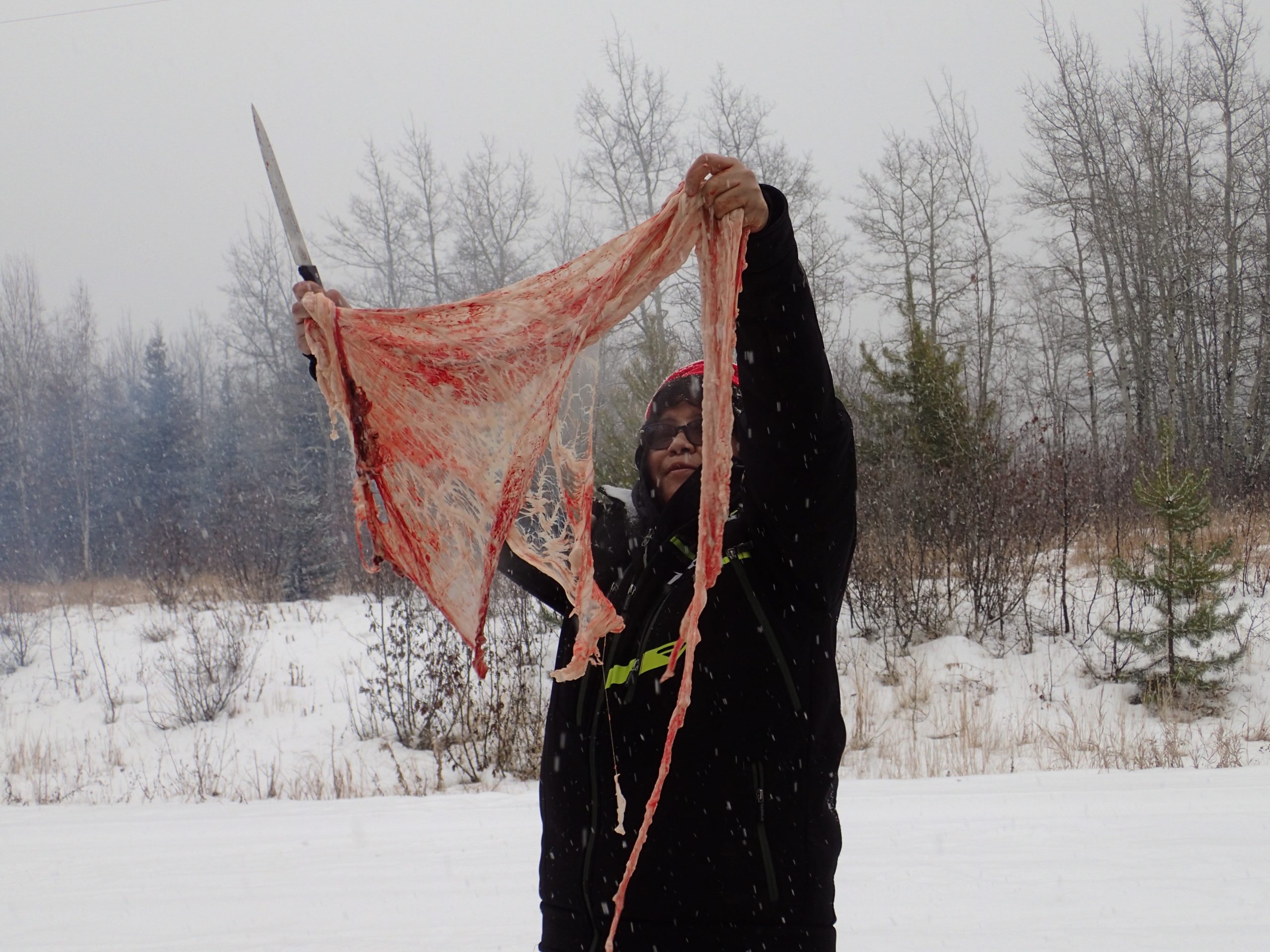The Sakawiyiniwak (Northern Bush Cree) art of Moose Butchering
The Sakawiyiniwak (Northern Bush Cree) art of Moose Butchering
I have been joining Helen Noskiye, Bigstone Cree Nation member, from Chipeywan Lakes in northern Alberta, Canada and her family members on moose hunting trips since around 2015. Helen has explicitly asked me to film their moose hunting trips “from the time the bullet leaves the gun to when the moose meat is drying on a rack”. She is interested in having good butchering practices recorded along with the intricate nehiyawewin (Cree) names for the different phases and sexes of moose along with their body parts. This is an ongoing effort and I’m always excited to join these knowledgeable hunters. Moose are a cultural keystone species for sakawiyinwak, and people are increasingly concerned about the safety, population, and health of moose in Bigstone Cree Nation territory. This concern is a result from ubiquitous oil extraction and aggressive logging in the boreal forest. Of particular anxiety for Elders, hunters, and plant users is the spraying glyphosate by forestry companies to suppress plants that compete with reforestation seedlings. Many of these plants are important foods and medicines for humans and moose. We are collaborating on a community-based monitoring project on moose and water, funded by Environment and Climate Change Canada, where we sample for moose health and microbiology and we are adding pesticide sampling in 2022.
Pictures
Reading Links
Westman, C.N., Joly, T.L., Pospisil, H.M. and Wheatley, K. (2020) Encountering Moose in a Changing Landscape: Sociality, Intentionality, and Emplaced Relationships, Ethnos, https://doi.org/10.1080/00141844.2020.1841262
Fisher, J.T. and Burton, A.C. (2018) Wildlife winners and losers in an oil sands landscape, Frontiers in Ecology and the Environment, 16(6), pp. 323– 328, https://doi.org/10.1002/fee.1807
Golzadeh, N., Barst, B.D., Baker, J.M., Auger, J.C., McKinney, M.A., (2021) Alkylated polycyclic aromatic hydrocarbons are the largest contributor to polycyclic aromatic compound concentrations in traditional foods of the Bigstone Cree Nation in Alberta, Canada, Environmental Pollution, 275, pp. 116625, https://doi.org/10.1016/j.envpol.2021.116625
Garibaldi, A. (2009) Moving From Model to Application: Cultural Keystone Species and Reclamation in Fort McKay, Alberta, Journal of Ethnobiology, 29(2), pp.323-338, https://doi.org/10.2993/0278-0771-29.2.323
Vandebroek, I., Pieroni, A., Stepp, J.R. et al. (2020) Reshaping the future of ethnobiology research after the COVID-19 pandemic, Nature Plants, 6, pp.723–730, https://doi.org/10.1038/s41477-020-0691-6
Golzadeh, N., Barst, B.D., Basu, N., Baker, J.M., Auger, J.C., McKinney, M.A., (2020) Evaluating the concentrations of total mercury, methylmercury, selenium, and selenium: mercury molar ratios in traditional foods of the Bigstone Cree in Alberta, Canada, Chemosphere, 250, pp.26285, https://doi.org/10.1016/j.chemosphere.2020.126285
Baker, J. (2016) Research as Reciprocity: Northern Cree Community-Based and Community-Engaged Research on Wild Food Contamination in Alberta’s Oil Sands Region, Engaged Scholar Journal, 2(1), pp.109-123, https://doi.org/10.15402/esj.v2i1.201
Acknowledgements
Special thanks to the Noskiye family and Bigstone Cree Nation for sharing their wisdom. Thanks also to Mike Beaver and Clinton Westman who shared moose part names.


















